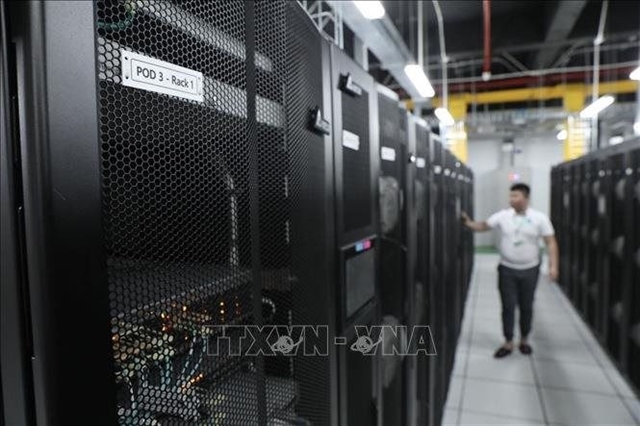The global data centre market reached new heights in 2024, driven by the growing demand for generative AI, which has triggered a new wave of investment.

HÀ NỘI — As competition grows to attract investment in artificial intelligence (AI), the data centre market in Asia, including Việt Nam, is seeing strong interest, with a sharp rise in new developments.
The global data centre market prospered in 2024, driven by the growing demand for generative AI, which has triggered a new wave of investment.
Commenting on the performance of data centres in Asia, Thomas Rooney, Associate Director, Industrial Services, Savills Hà Nội said: “There is strong leasing demand in tier-1 markets such as Seoul, Tokyo, Hong Kong, Kuala Lumpur, Singapore and Bangkok. However, the growth of rental values has begun to slow and is in the late upswing cycle. Meanwhile, Tier-2 markets such as Johor, Hà Nội, HCM City and Bengaluru (India), are gaining traction, positioned at the early stages of the upswing cycle with rising rental values.”
As the market becomes more competitive, yields for investment-grade properties in tier-1 locations are compressing, averaging around five per cent, with rates ranging from four per cent to seven per cent. Meanwhile, data centre development projects in emerging markets are offering higher yields, ranging from 9.5 per cent to 10.5 per cent, and are attracting growing interest from investors.
As demand for AI-driven activities continues to soar, a critical challenge for the industry remains the escalating hunt for power. The power supply is becoming an issue in markets that have traditionally attracted clusters of data centres.
Many utilities find they have not been able to build out transmission infrastructure quickly enough, and there is concern that, at some stages, they may be unable to generate sufficient power. Additionally, in some countries, concern about the pressure data centres exert on electricity grids, as well as the impact on national climate targets, have brought a complete halt to the building of new ones.
Ireland, for instance, has stopped issuing new grid connections to data centres in the Dublin area until 2028. Ireland’s transmission system operator estimates that data centres will account for 28 per cent of the country’s power use by 2031.
McKinsey’s analysis of current trends suggests that global demand for data centre capacity could rise at an annual rate of between 19 and 22 per cent from 2023 to 2030 to reach an annual demand of 171 to 219 gigawatts (GW).
“AI-driven data centres require two to five times more power than traditional cloud-based facilities, prompting a fundamental shift in design and site selection approaches. To address the issue, the market needs to find more innovative solutions. Việt Nam needs to invest in infrastructure development, ensuring grid power and cybersecurity, raising data awareness and promoting data sharing to take advantage of the transformative power of AI and data centres. In addition, possessing high-quality human resources will also be a plus to attract investment to the markets,” the Associate Director said.
Much of Asia’s current data centre supply is not yet designed to support AI servers. Most of the investment-grade facilities are co-location data centres with an IT load of 10-40MW concentrated in more mature markets. Hence, the race to develop AI-led data centres in the region is becoming more competitive.
AI’s continued growth into 2025 will further intensify the demand for infrastructure, spotlighting the market’s navigation of land and power constraints amidst rising data centre demand.
In Southeast Asia, recognising the importance of data centres to economic benefits, ASEAN economies have launched national AI strategies, typically Singapore's NAIS 2.0, integrating technology into many different fields.
Việt Nam's strategy for 2030 clearly identifies AI as a fundamental technology field of the 4th industrial revolution, contributing significantly to creating a breakthrough in production capacity, improving national competitiveness and promoting sustainable economic growth. — VNS





